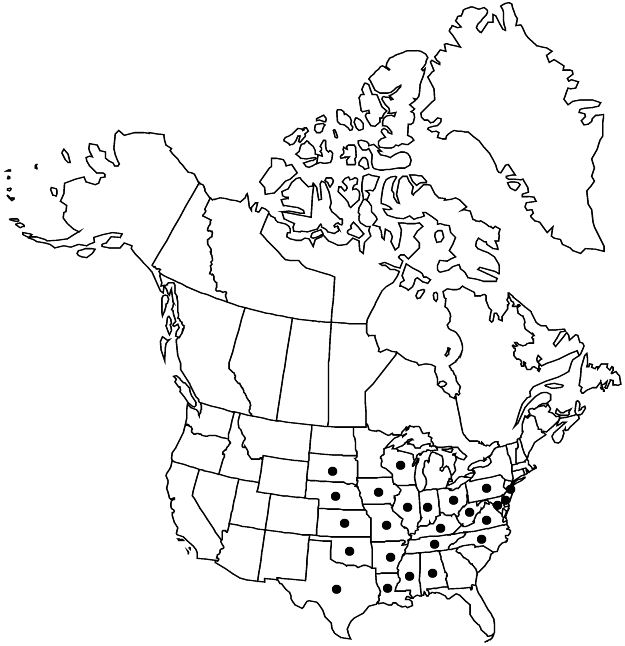Rhamnus lanceolata
Fl. Amer. Sept. 1: 166. 1813. (as lanceolatus)
Shrubs, 0.5–2(–4) m, unarmed. Branchlets greenish to gray, more than 5 cm, glabrous or sparsely to densely softly hirtellous and glabrescent. Leaves deciduous, alternate; petiole 3–8 mm; blade dull green abaxially, shiny darker green adaxially, lanceolate to elliptic, (3–)5–8 cm, herbaceous, base cuneate, margins finely crenulate or crenulate-serrate, apex acute to acuminate, both surfaces glabrous or hairy; secondary veins 4–5 pairs, all diverging at nearly same angle. Inflorescences fascicles or flowers solitary. Pedicels (1–)2–4 mm. Sepals 4. Petals 4. Drupes black, globose to subglobose, 5–7 mm; stones 2.
Phenology: Flowering Apr–Jun.
Habitat: Dry to moist thickets over calcareous rocks, seeps, rock outcrops, bottomlands.
Elevation: 50–1200 m.
Distribution

Ala., Ark., Del., Ill., Ind., Iowa, Kans., Ky., La., Md., Miss., Mo., Nebr., N.J., N.C., Ohio., Okla., Pa., S.Dak., Tenn., Tex., Va., W.Va., Wis.
Discussion
Plants of Rhamnus lanceolata with hirtellous-pubescent stems and leaves (subsp. lanceolata if given formal recognition; the type from Tennessee) are more restricted in distribution than glabrous plants, but the distinction often seems arbitrary. Densely hairy and glabrous plants both occur in Alabama and Tennessee. Plants with sparsely hairy leaves occur commonly in Kentucky and Illinois, rarely in Missouri and Iowa, and the density of the vestiture is variable.
Selected References
None.